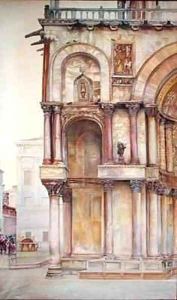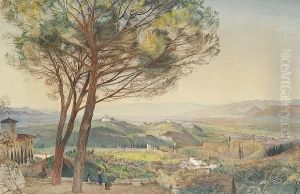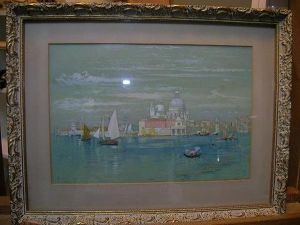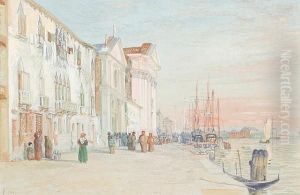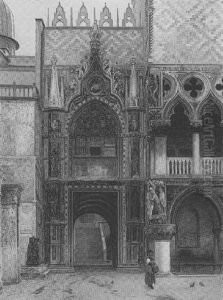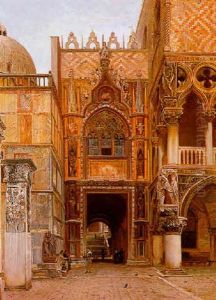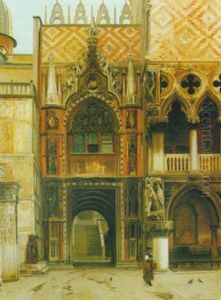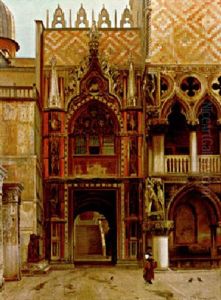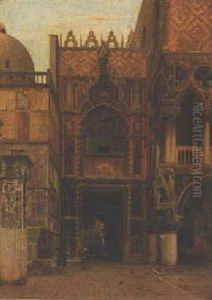John Wharlton Bunney Paintings
John Wharlton Bunney was a British artist known for his detailed architectural and landscape paintings. Born on June 21, 1828, in England, Bunney grew up in a period when the art world was undergoing significant changes, with the Romantic movement giving way to Victorian-era sensibilities.
Bunney began his artistic career as an apprentice to a tradesman but soon shifted his focus to painting. He was particularly influenced by the works of John Ruskin, the leading English art critic of the Victorian era, who advocated for detailed realism in art and the importance of nature's beauty. Ruskin's emphasis on meticulous attention to detail and precision in the representation of architecture resonated with Bunney, and these principles became hallmarks of his work.
Throughout his career, Bunney was committed to capturing architectural subjects with an almost scientific accuracy. He traveled extensively across Europe, especially in Italy, where he was captivated by the Venetian Gothic architecture. Venice, with its rich history and unique buildings, provided a wealth of inspiration for Bunney, and he dedicated much of his artistic energy to painting the city's landscapes and structures.
One of his most significant projects was a series of paintings commissioned by Ruskin himself for what was to become known as the 'Stones of Venice' collection. This project aimed to create a visual record of Venetian buildings that Ruskin feared were threatened by neglect and modernization.
Bunney's work was widely respected for its precision and clarity, and he exhibited at various institutions, including the Royal Academy and the Royal Watercolour Society. Despite his dedication to his craft and the quality of his work, Bunney did not achieve significant fame during his lifetime.
John Wharlton Bunney died on May 18, 1882. His legacy lives on through his paintings, which continue to be appreciated for their historical value and their exquisite detail, providing an invaluable visual record of 19th-century European architecture.
